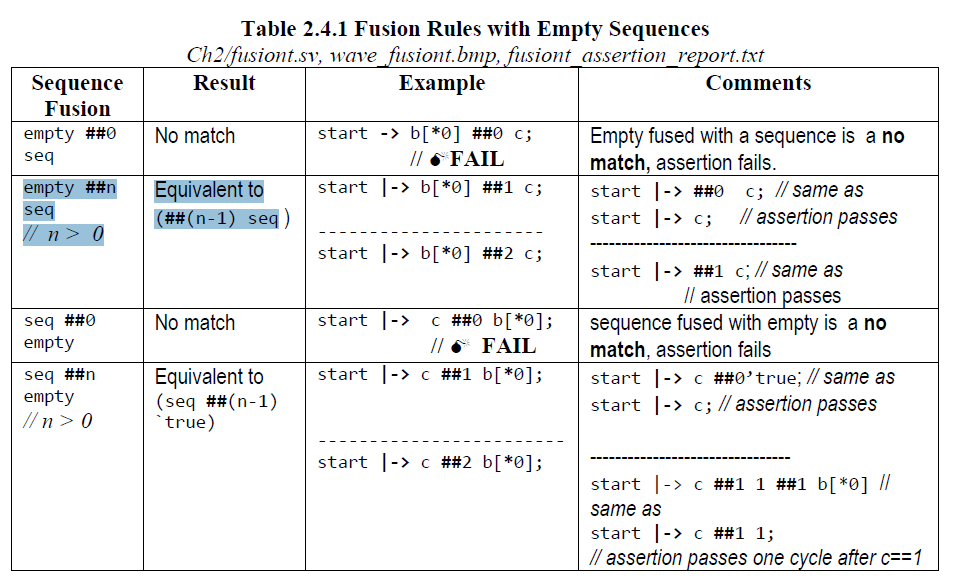In reply to vickydhudashia:
(b ##1 a[*0:1] ##2 c) is equivalent to
(b ##1 a[*0] ##2 c) or (b ##1 a[*1] ##2 c)
Now a[*0] is an empty match, and the rules of empty are as follows
empty ##n seq // with n > 0
Equivalent to: (##(n-1) seq
Thus,
(b ##1 a[*0] ##2 c) is equivalent to
(b ##1 ##1 c)
The LRM is correct, SystemVerilog LRM: page #244
b ##1 a[*0:1] ##2 c
is equivalent to
(b ##2 c) or (b ##1 a ##2 c)
From my book:
Ben Cohen
http://www.systemverilog.us/ ben@systemverilog.us
- SystemVerilog Assertions Handbook 4th Edition, 2016 ISBN 978-1518681448
- A Pragmatic Approach to VMM Adoption 2006 ISBN 0-9705394-9-5
- Using PSL/SUGAR for Formal and Dynamic Verification 2nd Edition, 2004, ISBN 0-9705394-6-0
- Real Chip Design and Verification Using Verilog and VHDL, 2002 isbn 0-9705394-2-8
- Component Design by Example ", 2001 ISBN 0-9705394-0-1
- VHDL Coding Styles and Methodologies, 2nd Edition, 1999 ISBN 0-7923-8474-1
- VHDL Answers to Frequently Asked Questions, 2nd Edition ISBN 0-7923-8115
